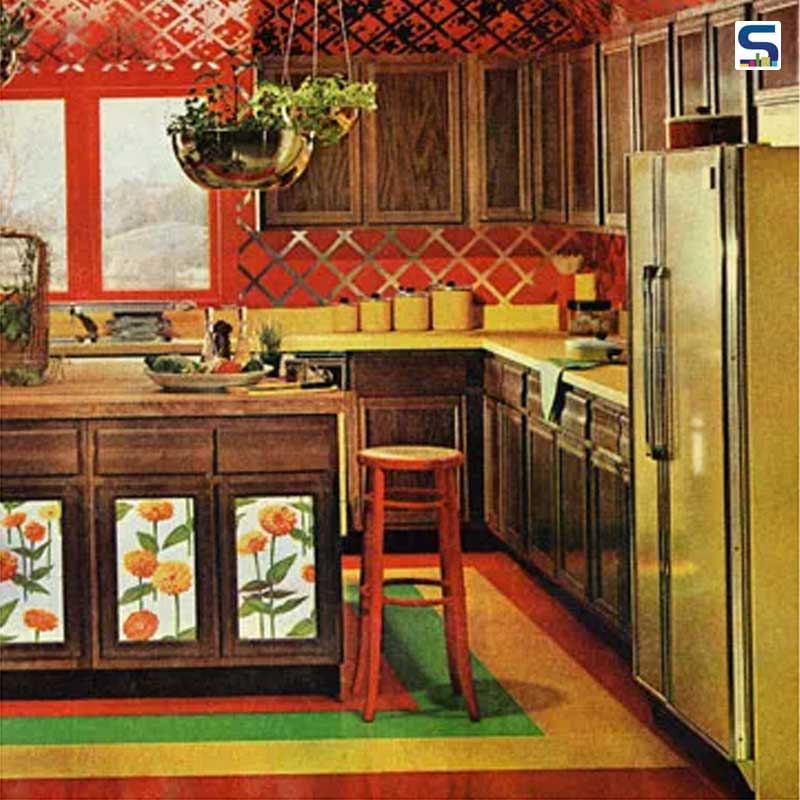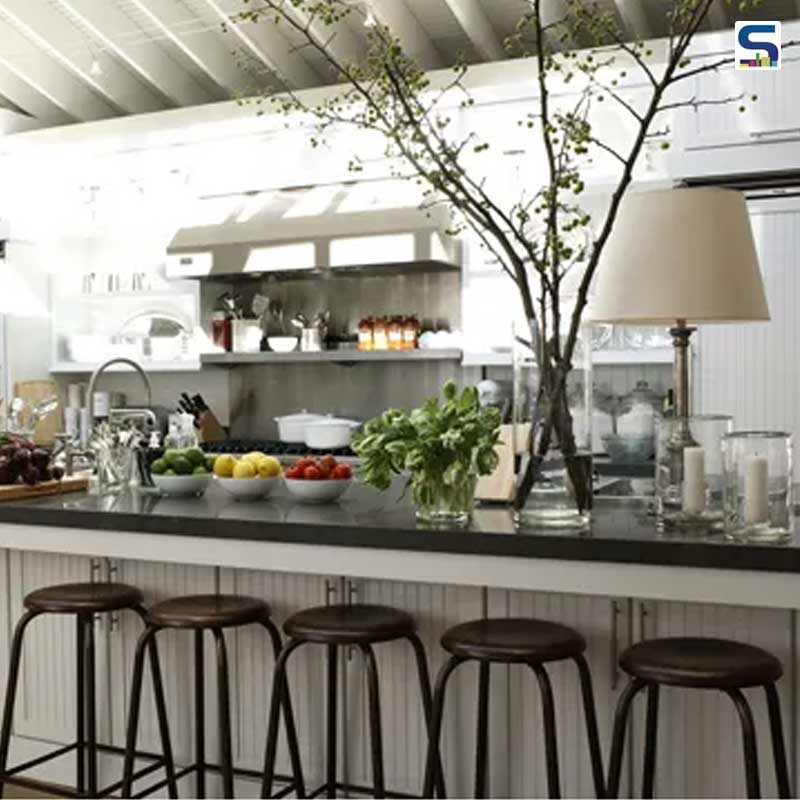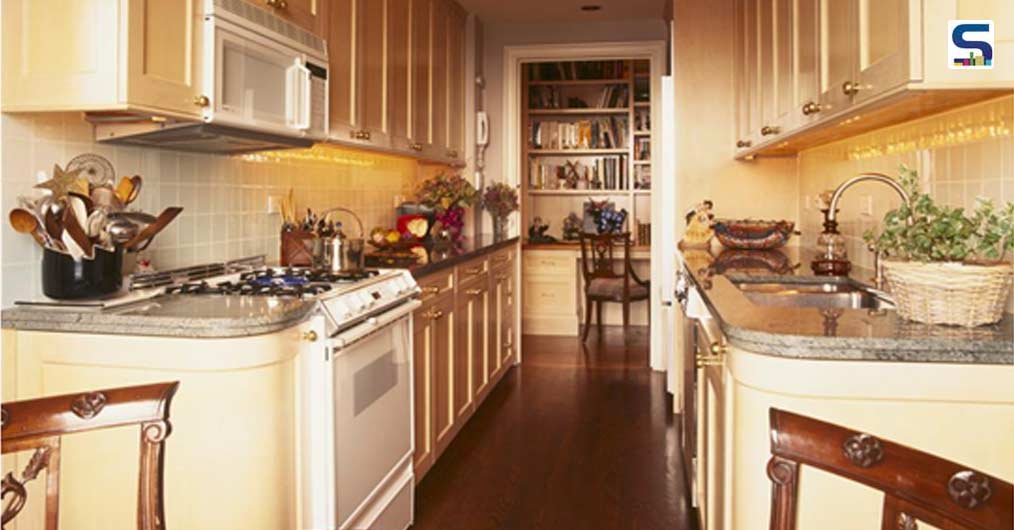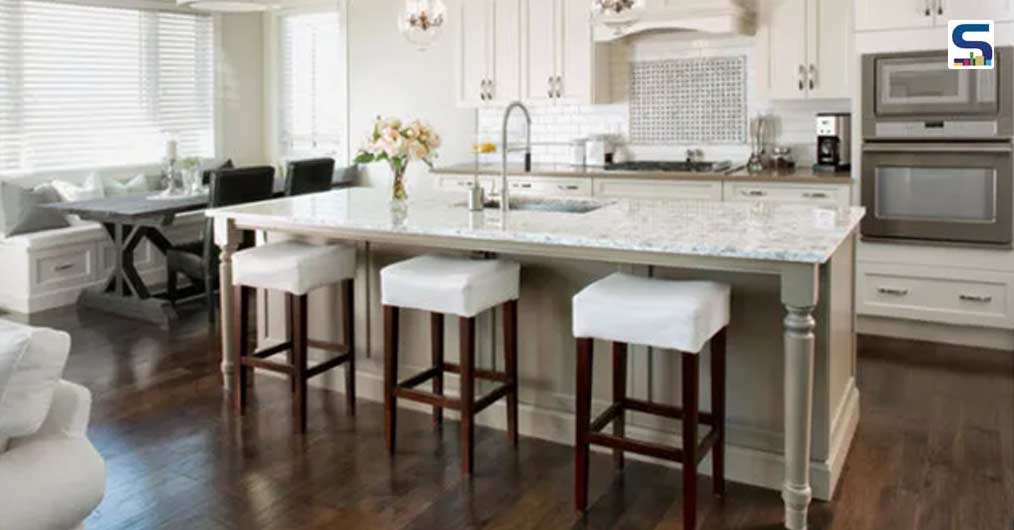
The modern kitchen is the heart of conversations, the hub of creativity, and a relaxing spot in the family. The modern-day kitchen has all the appliances and is designed with careful thought. But kitchens were not like this in the past. Kitchens in the earlier times were much different from what we see today. Since electricity was invented late and running water was not common, kitchens had a varied setup. During this time cooking was done over fire and water was hauled in from a well. Let us appreciate the evolution of kitchens by looking at the memories from the past. Here is a decade-by-decade explanation of kitchen designs by Surfaces Reporter(SR).
The 1950s Kitchen
This was the era post World War II which enabled people to use lively and bold colors. The time witnessed the growth of checked flooring and floral wallpapers. Kitchens during the 1950s had U-shaped kitchens where the sink, range, and fridge were placed at the center stage. Kitchens during this time moved from the back to the front. Pastel painted steel cabinets became popular. Things were still relatively sleek and geometric.

The 1960s Kitchen: The decade saw the transition to more giving up on cherry colors to pay the way for more dramatic contrasts. Features such as elaborate wallpaper, bright tile countertops, and gold accents got popular. Kitchens became more entertaining and were designed to connect easily to dining rooms. The period is known for its aesthetic shift where steel cabinets were being replaced by wooden ones.

The 1970s Kitchen: Around this time, women started began pursuing other interests which is why the kitchens took a back seat. Kitchens from this time were ambiguous and oddly colored (think browns, golds, and avocado tones). The standard flooring material was vinyl during this time. Cabinets were dark in color and made of wood. Another aspect was the excess use of brass during this time. The most popular theme was knotty pine and harvest tones. Texture and patterns were trending during this time along with tile backsplashes and colorful cookware and kitchen gear.
The 1980s Kitchen: As the 1980s approached the tone shifted to beige and neutral tones. The modern style became fashionable with curved edges, geometric patterns, or big florals in the kitchens. The vinyl flooring was being replaced with white tile. Trending colors were mauve, teal, blue, or yellow. Kitchen islands came into the picture with storage innovations. The overall aesthetic was big and extravagant since it became less of a domestic zone and more of a spot for light conversations. Open floor plan kitchens also originated during this time. Expansive islands and breakfast bars with more neutral color palettes such as white and beige counters and matching tile or Formica countertops were in style. The highlight of the 80s kitchen was the Euro-style cabinet, a white laminate front with a light-toned wooden band at the top.

The 1990s
The 90s paved the way for simpler and classic choices for the kitchens. This included light oak cabinetry matched with white tile floors, white appliances, and simple accents. Professional-grade appliances were more readily available for personal use around this time. The theme could be taken as shabby-chic. ornate paneling, ceramic tiles with country flourishes on ceramic tiles, and wooden cabinets were found in every other house. Other significant changes include uncluttered counters, large refrigerators, and gas ranges. Granite countertops in dark tones were a new addition to contrast the bright color scheme. The most iconic trend was sponge painting the walls with beige and yellow paint to look like stucco.

The 2000s
Kitchens became an integral part of the house as a combined great room. During this period the formal dining area became less common. Kitchens became the central design point and station and kitchen islands received more attention. Granite remained a popular choice for countertops and stainless steel appliances enhanced the views of the open concept kitchens. Dark wood cabinets too remained popular. Tuscan-style kitchens with lots of deep reds and tans were a new emerging trend.

The Current Kitchen — The 2010s: The latest home designs are all built by keeping the kitchen as the heart of the home. Open concept kitchens are still in style while cabinets can come in any color desired. Technology is the driving force for redesigning well-equipped kitchens. Kitchens nowadays are often a mix of contemporary with traditional. Both neutral and contrast tones are trending. To add the vintage charm reclaimed wood floors, subway tile backsplashes, farmhouse sinks, and brass hardware is being used.
Conclusion
These were the most noteworthy trends through the decades. In the past, we might have not had social media, but all the trends seem quite Instagram-worthy!